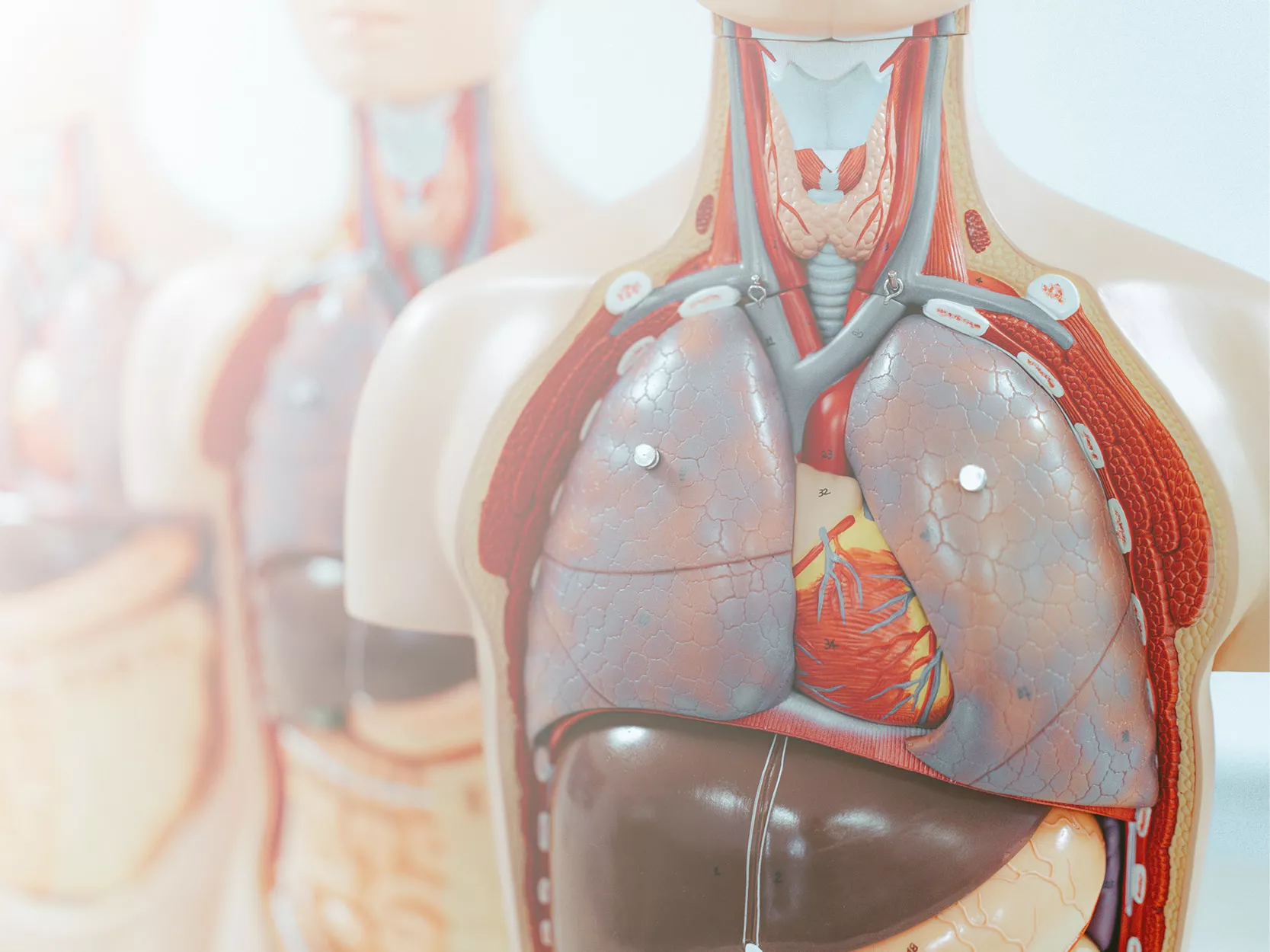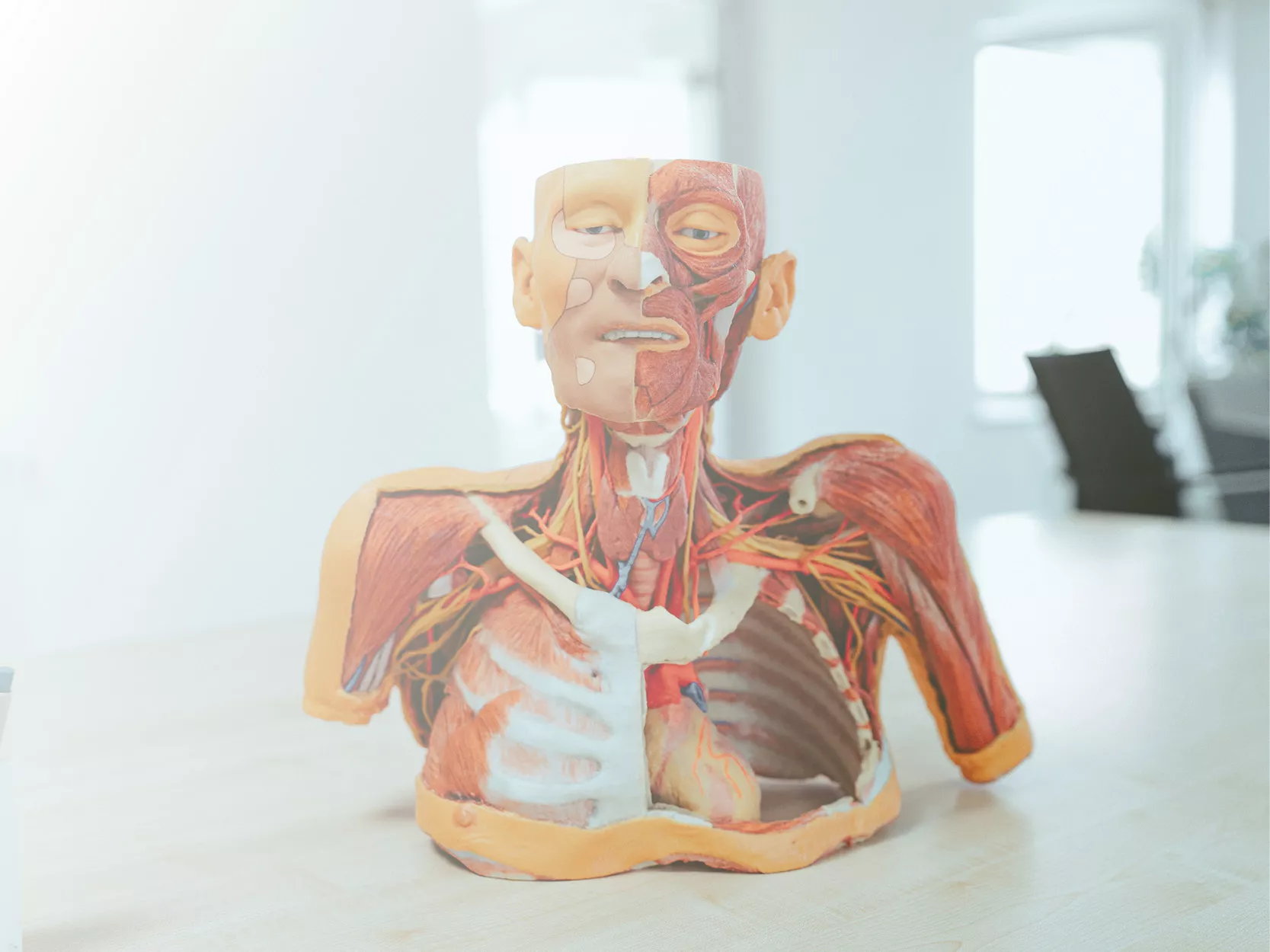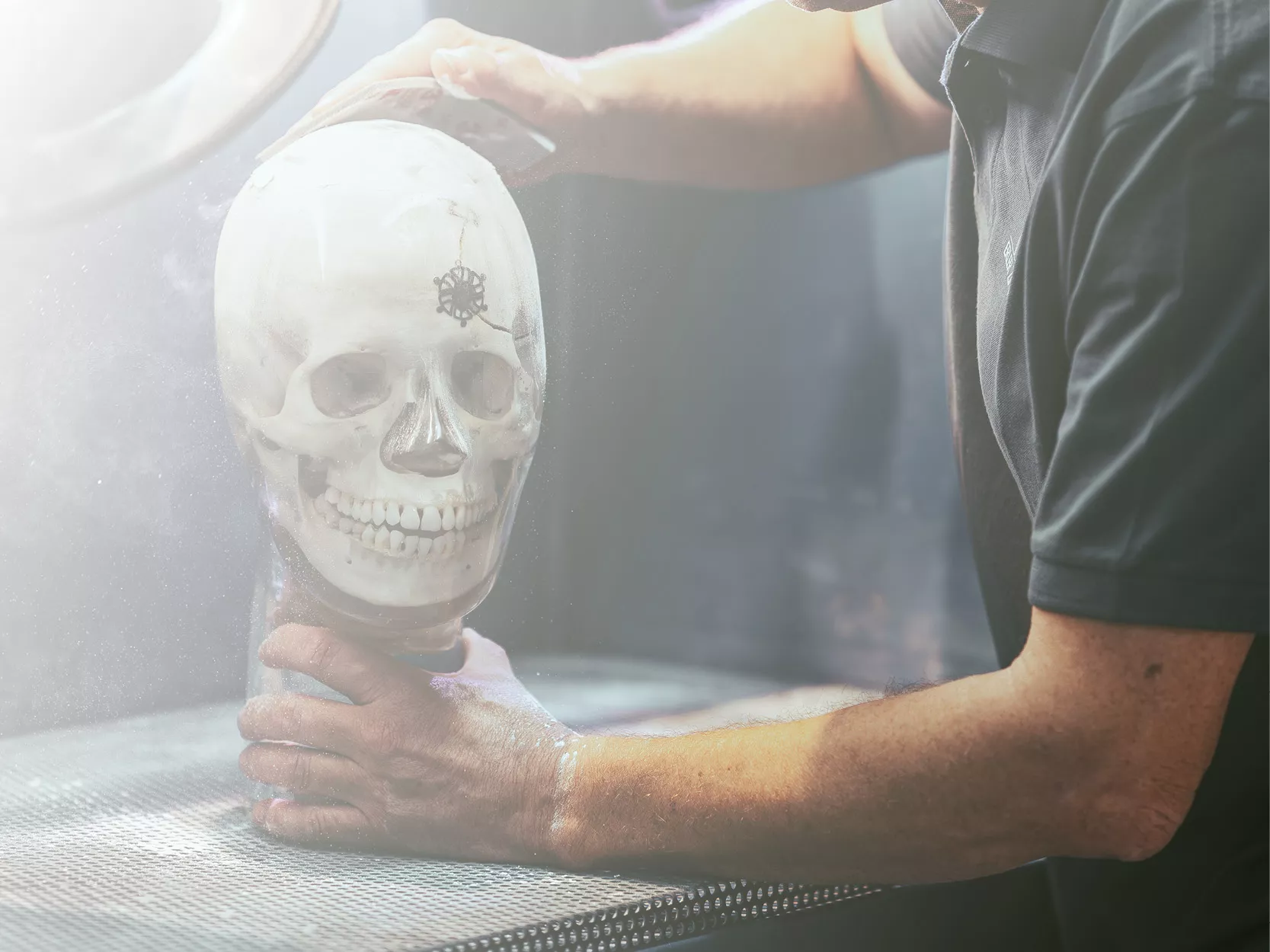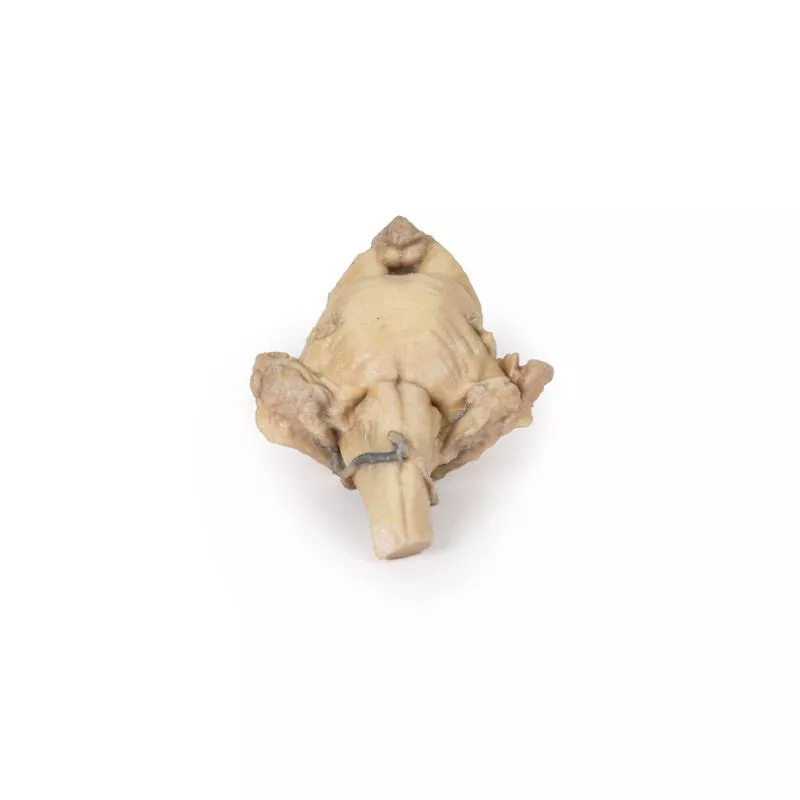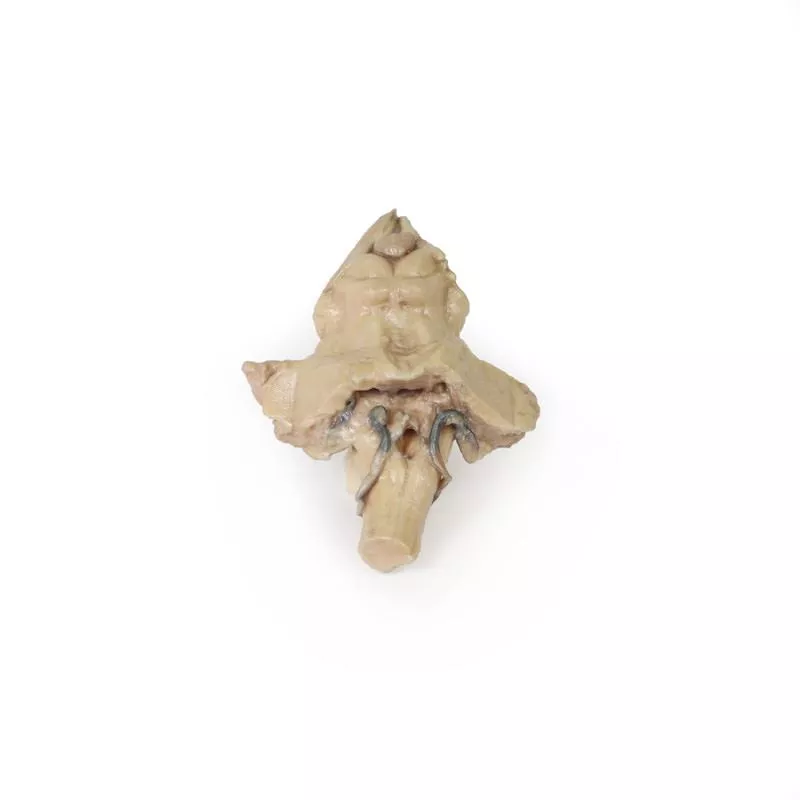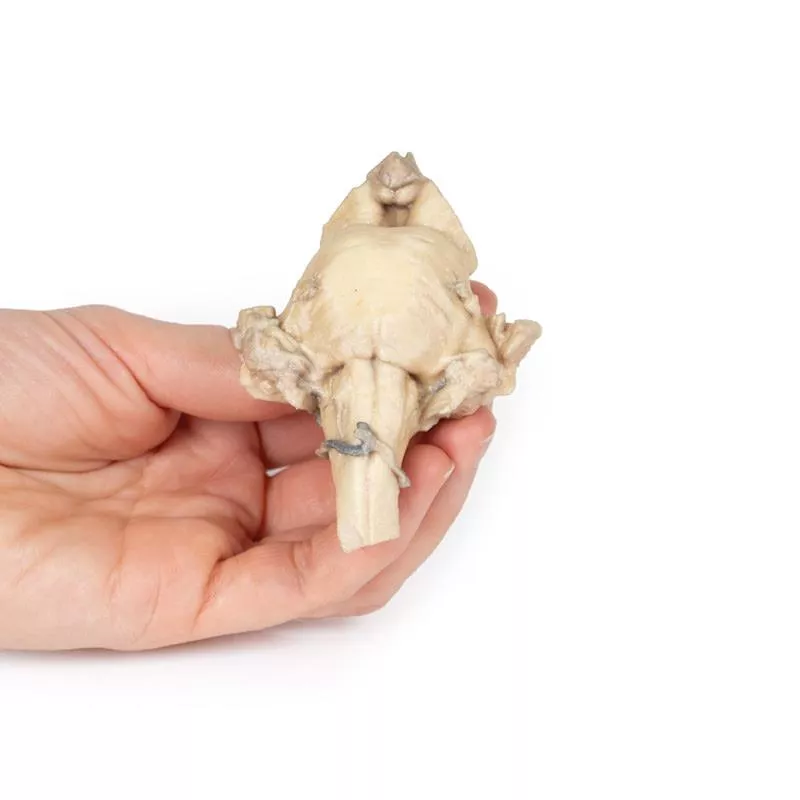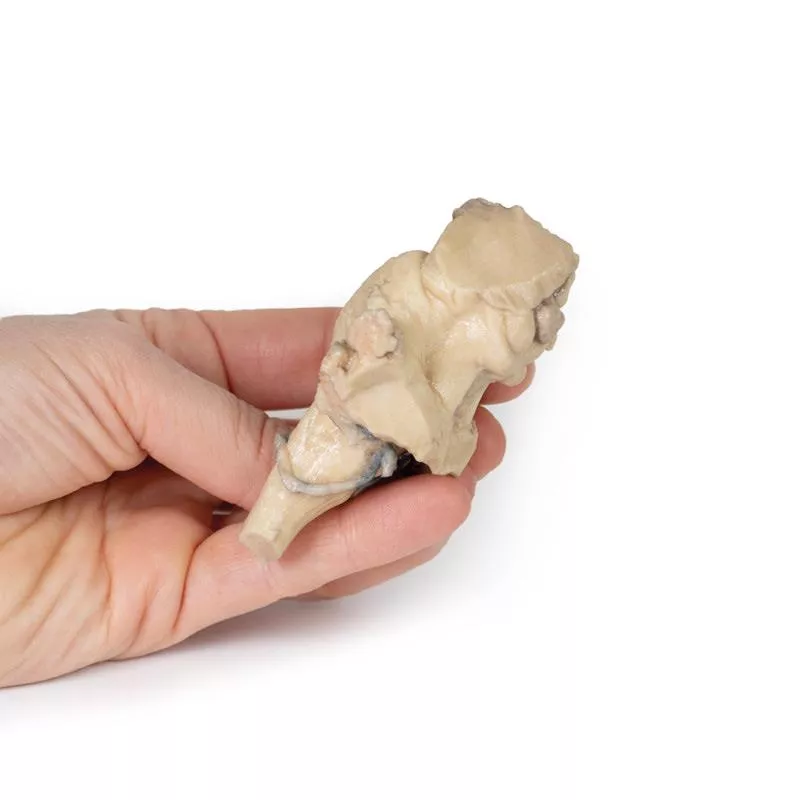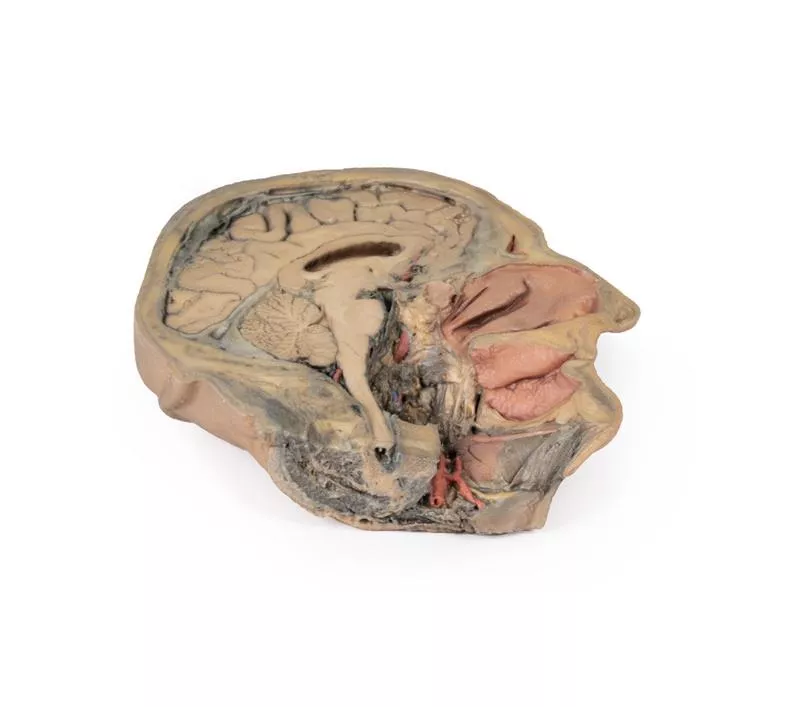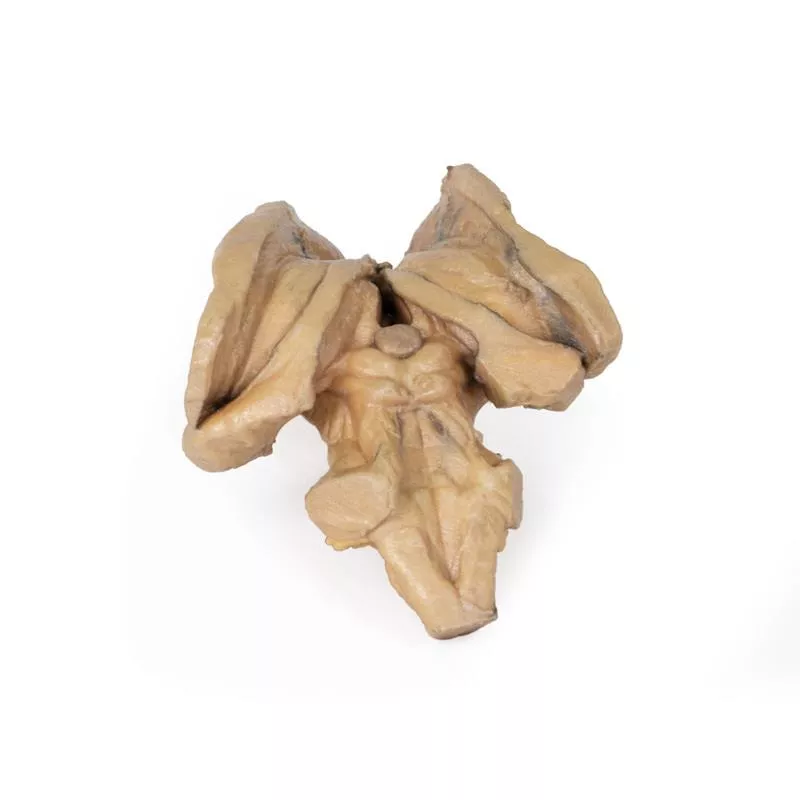Product information "Brain Stem, isolated anatomy from midbrain to medulla oblongata"
This 3D model provides a view of the isolated brainstem anatomy from the midbrain to the medulla oblongata, and compliments the other diencephalon/brainstem 3D model (MP1100) in our series.
Rostrally, the 3D model has been sectioned at an angle from the overlying diencephalon while retaining the mamillary bodies of the hypothalamus between the cerebral peduncles (anteriorly) and the pineal gland/epithalamus (posteriorly).
Posteriorly, the corpora quadrigemina (the collective superior and inferior colliculi) of the midbrain are prominent adjacent to the superior cerebellar peduncles. The cerebellum itself has been removed, leaving the cross-section of the middle and inferior cerebellar peduncles on each side. Inferior to the sectioned peduncles is the partially opened fourth ventricle and remnants of the posterior inferior cerebellar arteries.
On the ventral aspect of the 3D model the pons is preserved with the origin of the trigeminal nerve (CN V) preserved (particularly on the left side). Inferior to the pons on the medulla oblongata, both the pyramids and olives are visible on both sides (particularly clear on the right).
Rostrally, the 3D model has been sectioned at an angle from the overlying diencephalon while retaining the mamillary bodies of the hypothalamus between the cerebral peduncles (anteriorly) and the pineal gland/epithalamus (posteriorly).
Posteriorly, the corpora quadrigemina (the collective superior and inferior colliculi) of the midbrain are prominent adjacent to the superior cerebellar peduncles. The cerebellum itself has been removed, leaving the cross-section of the middle and inferior cerebellar peduncles on each side. Inferior to the sectioned peduncles is the partially opened fourth ventricle and remnants of the posterior inferior cerebellar arteries.
On the ventral aspect of the 3D model the pons is preserved with the origin of the trigeminal nerve (CN V) preserved (particularly on the left side). Inferior to the pons on the medulla oblongata, both the pyramids and olives are visible on both sides (particularly clear on the right).
Erler-Zimmer
Erler-Zimmer GmbH & Co.KG
Hauptstrasse 27
77886 Lauf
Germany
info@erler-zimmer.de
Achtung! Medizinisches Ausbildungsmaterial, kein Spielzeug. Nicht geeignet für Personen unter 14 Jahren.
Attention! Medical training material, not a toy. Not suitable for persons under 14 years of age.





